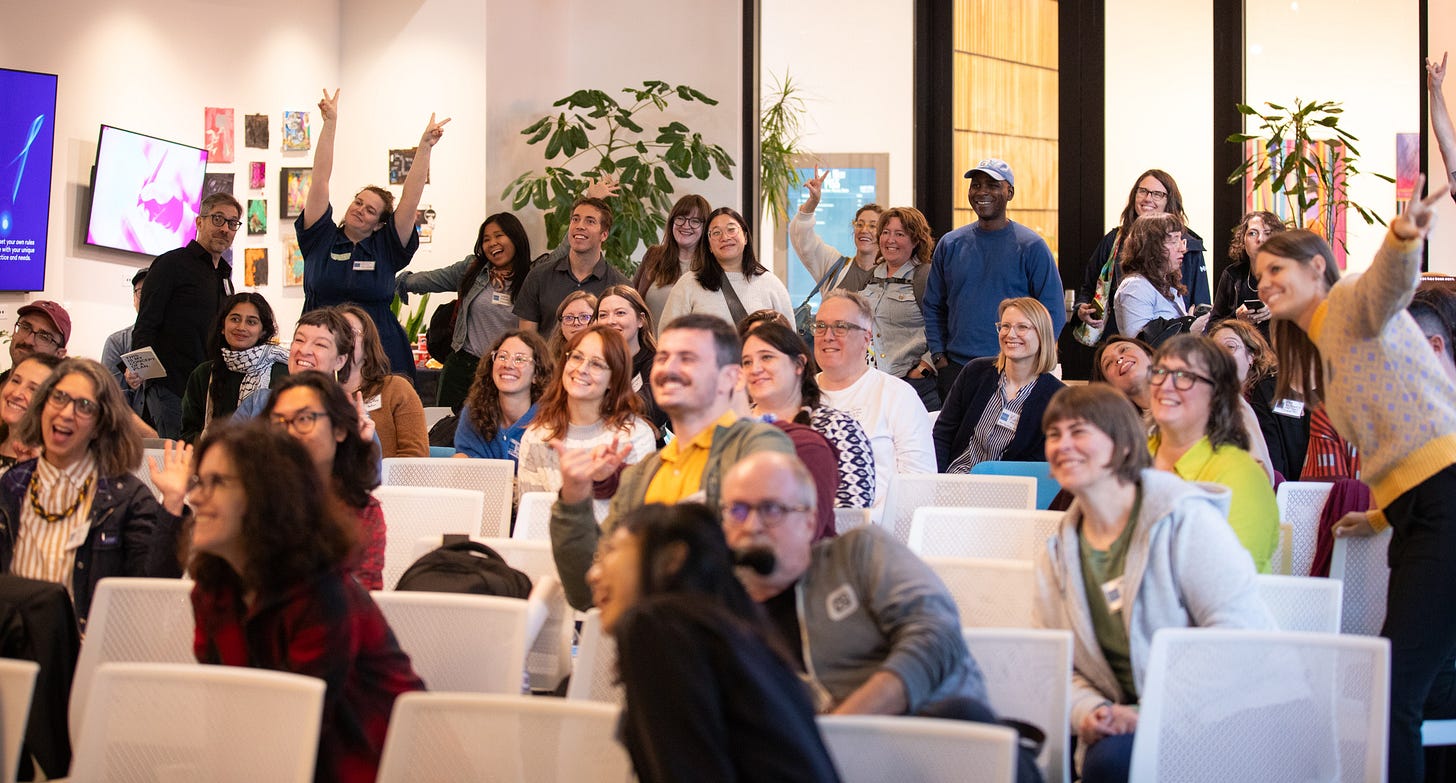How can we actually design for the public?
Reflections on a conference and a design fiction thought experiment
We just wrapped Design For The Public 24 in Portland. We had two days of rad folks show up from all over the country talking about their work, commiserating with others, and learning from each other. I had a vision that you could assemble a “hallway track” style conference, harkening back to what unconferences used to look like and we basically did it. Shout out to Technologists For Public Good for partnering with me on it.
Writing my opening talk for the conference was not a picnic. I just don’t care about design systems or front-end frameworks right now. I think all the normal things are important — designing better UIs, writing for plain language, accessibility and optimizing for slow internet — but I think there are so many big problems going on, that it was difficult to get excited about design. This isn’t even about a seat at the table, it’s about much bigger problems.
Don't get me wrong. The conference was incredible. People came from all over, showed up vulnerably, and dove deep into hard conversations. But as I stood there talking about consequence design (reminder: examining how interfaces and technology proliferate daily life, and confronting whether things "had to be that way"), I kept thinking about the bigger picture.
I’ve been thinking a lot about systems. It’s sort of difficult to avoid. So many cascade failures of societal collapse right now, stems from a tide of failed systems. Whether it’s unemployment systems using COBOL or something more local, like the City of Portland not having a municipal waste bureau, it’s become increasingly clear that the systems of yore were not built for the resilience of disruptive technology and the 21st century.
Without confronting this reality, it’s really difficult to care about APIs. Spending more time debating the value of your work than actually getting to do it is demoralizing. Having to inhabit a canard of invisible money moving from one entity to another in order to solve problems, all while people go hungry or remain unhoused is infuriating.
When I talk about systems, I’m not talking about abstract "systems thinking" that fills business books, but the actual mechanisms that shape our daily lives. The invisible orchestras playing beneath every stage of society.
Which led me to a thought experiment I've been playing with. Let's call it antieconomics.
(Yes, lowercase. No, not a typo.)
Imagine if we created a framework that measured what actually matters instead of what's easy to count. A critical design fiction that asks: What if we valued invisible labor? What if we counted community resilience instead of GDP? What if we optimized for human dignity instead of efficiency?
It's like consequence design but for entire systems. A way to examine not just whether interfaces had to be that way, but whether our whole approach to measuring success and progress had to be this way.
I know. It sounds academic. Maybe even a bit radical. But here's the thing – at the conference, when people started talking about their real frustrations with how we measure impact, with how we define success, with how we determine value... suddenly it didn't seem so academic anymore. Most of the people had never heard the term “critical design” before, but when you explain these concepts, they become very clear.
So here's what I'm thinking about:
How do we build literacy around systems beyond abstractions?
What if we treated antieconomics as a design prompt?
What muscles do we need to develop to actually fix broken systems?
I don't have answers yet. But I'm done pretending that better design alone will solve these problems.
